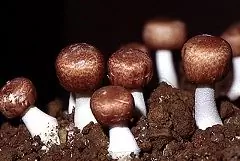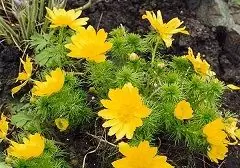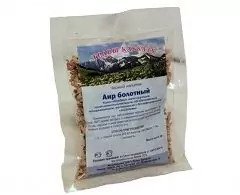Elder
Elderberry is a perennial plant belonging to the honeysuckle family. Externally, black elder or red elderberry is a large shrub or short tree. Elderberry blooms from May to mid-June in small yellow-white flowers with a fragrant aroma. Berries, both red and black, ripen in August - September.

In the wild, red elder and black are found on the edges of forests in the southeast and central zone of Russia, in the Baltic States, Belarus, Ukraine, and Crimea. Elderberry grows, both in shady places and in sunny glades.
The difference between black elderberry and red elderberry is that black elderberry has a lot of useful properties, but red elderberry is considered a poisonous plant.
The benefits of elderberry and its properties
Black elderberries have a complex chemical composition. It consists of the following components:
- Saccharides;
- Organic acids;
- Semi-solid essential oil;
- Ethylisobutyl;
- Choline;
- Isoamylamine;
- Carotene.
In addition, the beneficial properties of elderberry are due to the content of tannins, paraffin-like and mucous substances in it.
To a greater extent, in elderberries of black malic acid. It contains a lot of ascorbic acid (vitamin C), as well as natural sugars (glucose and fructose).
Not only elderberries are rich in vitamins and nutrients. The benefits of elderberry and the properties used for treatment are also present in its leaves, twigs and bark. The benefits of elderberry leaves are high in carotene and vitamin C. But dried leaves contain provitamin A1.
Thanks to such a rich composition, the leaves, flowers and bark of the black elderberry have a lot of medicinal properties:
- Antipyretic;
- Diuretic;
- Laxative;
- Astringent;
- Calming (sedative);
- Diaphoretic.
Young elder leaves have general tonic and laxative properties. Decoctions from all parts of black elderberry have the ability to regulate the body's metabolism. Many useful properties of black elderberry are possessed by dried berries.
The health benefits of elderberry are represented by the following results:
1. Excretion of bile improves;
2. Increased diuresis;
3. The movement of intestinal contents is improved.
Using elderberry
For treatment, flowers, berries and leaves of black elderberry are usually used. They are dried in ovens and harvested for the winter.
It should be noted that the benefits of black elderberry remain in fruits for 6 months, it is not recommended to store it longer. But in flowers, the properties of black elderberry can be stored for a very long time. So, flowers can be stored for 2 - 3 years, but only in a dry room with good ventilation. The properties of red elderberry in flowers are also considered dangerous, therefore they are not recommended to be used even for home decoration.
Undoubtedly, the black elderberry has the greatest benefits in its raw form. Even in ancient times, people plucked young shoots and made a salad from them. At the same time, they were careful and knew how to distinguish red from black elderberry. Fresh elderberries were used to make drinks. Black elderberry juice is now mixed with lemon juice, zest and water. Thus, the original healing kvass is obtained.
Elderberries can be used to make jelly, compotes, preserves. For sweetness, it is recommended to add honey, not sugar, to them. Due to this, the benefits of black elderberry will be preserved to a greater extent.
Traditional medicine actively uses the benefits of black elderberry. Fresh and dried elderberries are successfully used to treat and prevent the following diseases:
- Laryngitis;
- Hepatitis;
- Bronchitis;
- Flu;
- Neuralgia;
- Kidney disease;
- Bladder disease;
- Rheumatism;
- Gout.
Black elderberries are dried and used to treat a rare disease of malaria. Dried and fresh black elderberries, according to medical research, have such a high content of medicinal properties that they are included in the complex of therapy for oncology (stomach cancer and skin cancer). In the case of stomach cancer, the patient is given a jam made from fresh black elderberries. Oncology of the skin is treated with a special agent: fresh berries are squeezed out, insisted on wine, and the patient is treated with the black elderberry extract obtained in this way.
Decoctions and infusions are prepared from flowers and leaves of black elderberry, which have strong antibacterial and diaphoretic properties. These funds help with colds (tonsillitis, flu, bronchitis, SARS). To obtain a healing infusion, take 1 tbsp. l. flowers and pour a glass of boiling water. This mixture is brought to a boil and simmered over low heat for 15 to 20 minutes. Then the broth is cooled, wrung out and used in warm form, 0.5 cups, inside, before eating. Infusion can also gargle with colds. In addition, such a drug is excellent in the fight against ailments such as arthritis, gout and rheumatism.
Applying steamed black elderberry leaves to sore spots can relieve inflammation. That is why such a tool is used for the following problems:
- Diaper rash;
- Burns;
- Inflammation of the hemorrhoids;
- Furunculosis.
A widespread folk remedy for constipation is to take advantage of the black elderberry from young fresh leaves. The properties of the red elderberry in the leaves are also poisonous, so it is important to distinguish it when the leaves are harvested. So, for the treatment of chronic constipation, the healing properties of elderberry are used as follows: the leaves are boiled in honey, and the resulting medicine is taken orally.

A decoction (inside and in the form of lotions) from the bark of black elderberry helps well with various diseases:
- Skin diseases;
- Kidney disease;
- Arthritis;
- Rheumatism;
- Gout.
In addition, the benefits of elderberry and the properties of toning and rejuvenation are widely used in cosmetology. A lotion is prepared from the flowers of the plant and used to wipe the skin of the face and neck. This lotion can also be frozen and rubbed over the skin.
Contraindications and harm when using elderberry
Elderberry, like any other medicinal plant, has some contraindications for use.
So, black elderberry is not recommended for use with the following health conditions:
- Ulcerative colitis (enterocolitis);
- Crohn's disease;
- Chronic diseases of the gastrointestinal tract;
- Pregnancy (very carefully, under medical supervision).
Most often, doctors warn patients against the use of black elderberry by children under 12 years of age.
Unfortunately, people often confuse black elder and red elder plants. If you want to use this plant for medicinal purposes, you need to be careful and not make a mistake, since the red elderberry can be harmful to health.
Red elderberry is poisonous for humans, therefore you need to be especially careful with this plant. It is not very easy to distinguish red from black elderberry: red elderberry differs, of course, by the red color of its berries. But this is only when it ripens. But in those periods when leaves and twigs of a plant are used for medicinal purposes, it is important to be able to distinguish red from black elderberry. Otherwise, you can get not the benefit of the red elderberry, but the poisoning of the body.
YouTube video related to the article:
Found a mistake in the text? Select it and press Ctrl + Enter.







